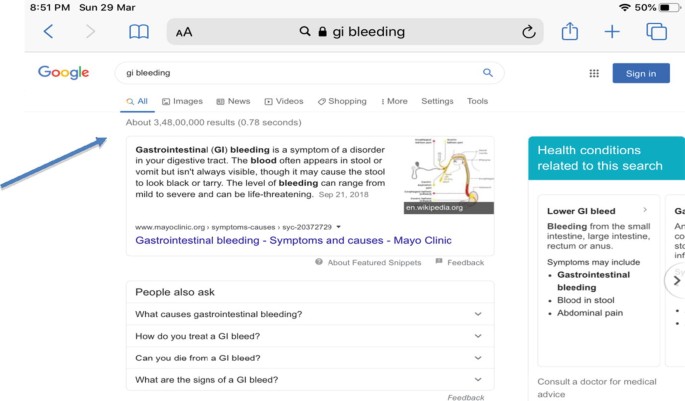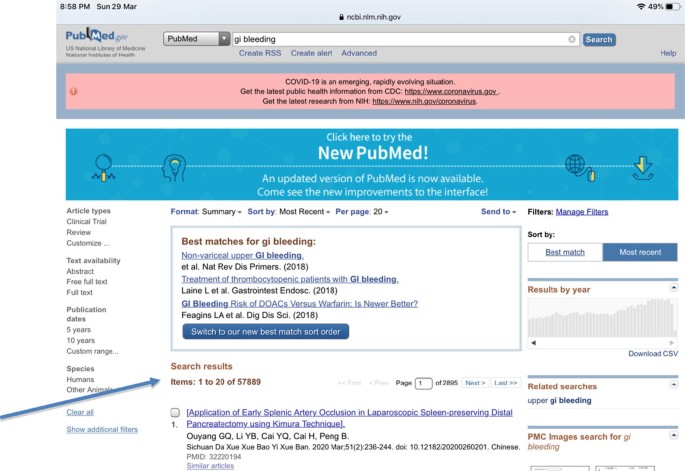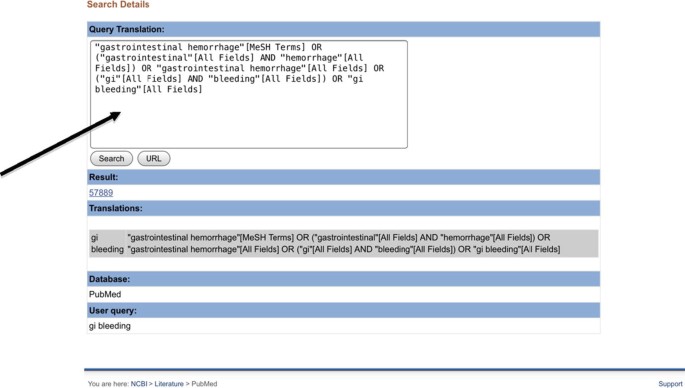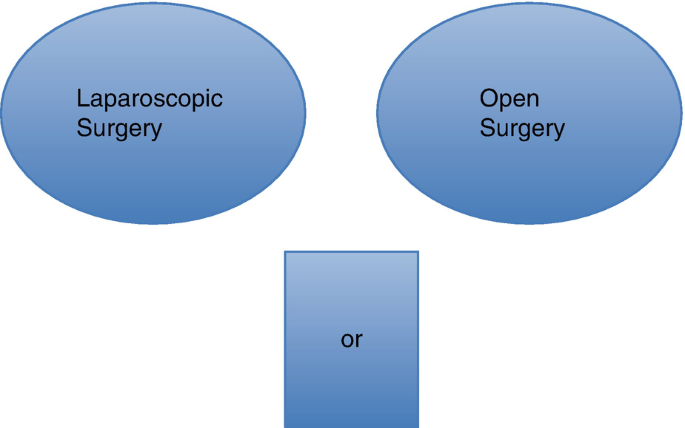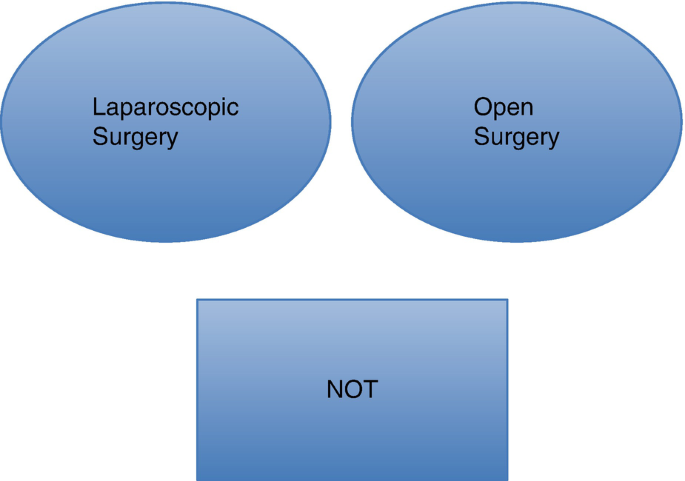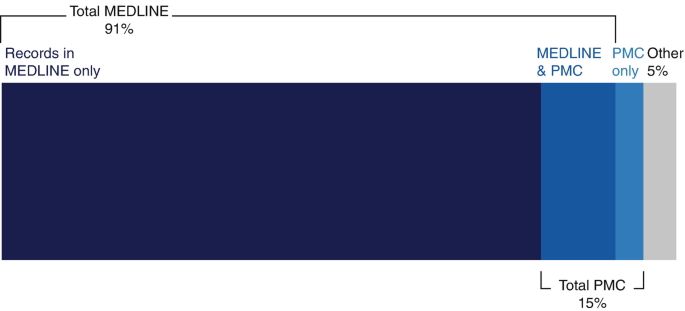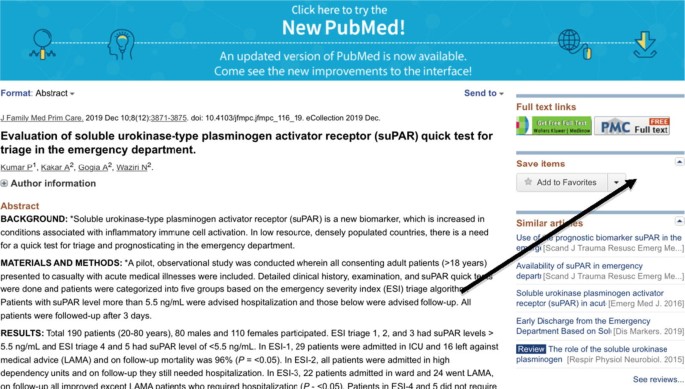Abstract
In scientific writing, whether it is a research paper, thesis, or dissertation, it is important to investigate a problem that has not been tackled before—that is, to fill a gap in the current knowledge. The first question an editor or reviewer asks after seeing a submission is ‘Why did the authors do the work, is the subject original?’
“Research is creating new knowledge.”
Neil Armstrong, American Astronaut, (1930–2012)
You have full access to this open access chapter, Download chapter PDF
Similar content being viewed by others
1 Why Is Reviewing the Literature Important?
In scientific writing, whether it is a research paper, thesis, or dissertation, it is important to investigate a problem that has not been tackled before—that is, to fill a gap in the current knowledge. The first question an editor or reviewer asks after seeing a submission is ‘Why did the authors do the work, is the subject original?’
Thus, the aim of a review of the published literature is to explore and subsequently discuss key published material relating to your topic and research questions. This is to show your understanding and awareness of how your research might add to what is already known about the subject. A review of the literature is another area in scientific writing which should also be relevant, precise, and concise [1, 2].
In a review, you are expected to identify and group together similar studies that are relevant to your research question or topic and compare, contrast and evaluate all of them. Some studies may look similar to what you have done or intended to do but once you read the full text you may find that either the population was different, e.g., it was Western, or the intervention or technique to do the test was different. You should highlight these differences in the review.
2 What Are Five Crucial Steps for Reviewing the Literature?
For a good review of the literature, the following steps are recommended:
-
Step 1 Frame a research question and plan a literature search.
-
Step 2 Decide which search engine to use.
-
Step 3 Record, preferably electronically, and review the search results.
-
Step 4 Identify how the topic has evolved over a period of time.
-
Step 5 Highlight the gaps in the knowledge which need to be filled.
3 What Is a Good Literature Search?
The most important part of the review is a good literature search. A good search should seek out both the established facts that have been published in journals and books and deduce logical inferences drawn from evidence-based medicine [1]. Limit your research generally to the past 10 years but you should not miss a landmark study outside this period. Try and include only relevant articles because those unrelated to your subject will only serve to make your publication bulky and boring to read.
4 What Are ‘Keywords’?
These are usually nouns or short phrases using which the important concepts presented in a paper can be identified [3]. For example, in case you plan to write a paper on the role of hydroxychloroquine to prevent COVID-19 infection among health care workers, the keywords will be 1) COVID-19, 2) Hydroxychloroquine, and 3) Health care workers.
6 Which Are the Various Search Engines That I Might Find Useful?
There are multiple literature sources include online databases like PubMed and MEDLINE from the USA’s National Library of Medicine, Thomson Reuters, EMBASE, CINAHL, the HINARI programme of the WHO, CABI, Google Scholar, Cochrane Library, Index Copernicus, and Indian Medlars [1].
Apart from online databases, data can be collected from books, approved dissertations, ongoing trials, World Health Organisation data, and from e-portals (Table 18.2).
7 What Is Wikipedia?
This is an English language encyclopaedia that is accessible, free online, and contains more than 6 million articles. Most of the articles are informative but a few contain inaccuracies mainly because their authenticity has not been verified by expert reviewers. Those who run the site, which we believe has its uses, always mention where an article may be prone to error. For medical writing, it is a site that should be used with some caution [5].
8 Is the Google Search Engine Useful?
Google is the most frequently used website in the world and in 2018 captured 69% of the share of all the search engines in the United States. This was followed by Google Images (22.03%) and Yahoo, Bing, Amazon, Twitter, Pinterest, and others [6].
Although it provides results quickly it also provides unnecessary information which is difficult to distinguish and discard. It is best used with caution when doing scientific research. Fig. 18.1 shows that a simple search for ‘Gastrointestinal Bleeding’ took only 0.78 sec but yielded 34,700,000 results which were obviously impossible to scan.
Tang et al. state that ‘Google is not primarily a medical search engine but doctors and patients use it continually for their internet searches related to illnesses and health’. However, ‘When used properly, the internet empowers both patients and doctors and may improve the quality of care’. [7].
9 How Useful Is PubMed as a Search Engine?
We would recommend that you use PubMed as your main search engine for scientific writing. It consists of 30 million articles that have been published (print and online) from journals that have been carefully chosen as having met some exacting scientific and presentation standards and are thereby ‘indexed’—a prized attribute. These are on Medicine, Dentistry, Healthcare systems, and Preclinical research. It is free to use with the US National Library of Medicine (NML) maintaining its papers related to health. Its online presence is in the form of MEDLINE. PubMed is the search interface for MEDLINE as well as other NLM resources, making it the primary source now for the biomedical literature [8].
PubMed also has a facility called ‘My NCBI’ to save multiple search papers, filter your search, and send you the results by email. You can also refine your search from dates to years and also select the article type. However, you should remember that it may take 3–6 months for a paper to appear on PubMed after it is published.
Using PubMed you can access citations, abstracts and some full-text articles on the life sciences and biomedical topics. For more effective use of PubMed, we recommend using the YouTube video or a short instruction clip on the web site via the link http://www.nlm.nih.gov/services/pubmed.html.
Figure 18.2 shows an example of a search on Gastrointestinal Bleeding which yielded 57,889 papers—much less than what Google found.
10 What Are MeSH Words?
MeSH stands for Medical Subject Headings. Using MeSH words, you can enhance the accuracy and effectiveness of your search of the literature on PubMed. The link appears on the right of the screen under More Resources (Fig. 18.3). MeSH terms are labels allocated to each scientific item in Medline in order to describe what the article is about. The National Library of Medicine staff with training as ‘indexers’ look at each new manuscript added to Medline and assign to it about 10–12 labels that best describe the content of the article. MeSH terms are official words or phrases selected to represent particular biomedical concepts. This strict rule results in more efficient searches [9].
MeSH terms are organized into a hierarchy called the MeSH tree. For instance, if you were to search for lymphoma, you would see 134 subtypes along with definitions like lymphoma, non-Hodgkin’s lymphoma, ocular lymphomas, lymphoma mantle cell, etc. and you will then need to pick the types that interest you to conduct a more effective literature search. This is time-saving by restricting the absolute number of titles and increase the number of relevant titles which you need to read.
11 What Are Boolean Operators?
Boolean Operators are simple words (AND, OR, NOT, or AND NOT) used as combinations to eliminate keywords in a search. This provides more intensive and productive results. They save time and effort by removing inappropriate hits that need to be scanned before they are discarded [10].
AND—means both terms must be used in a search. For example, in research ‘Is laparoscopic or open surgery better in patients with pancreatitis’ (Fig. 18.4).
OR—means either term (or both) will be in the search document. An example of this is laparoscopy or open surgery in acute pancreatitis (Fig. 18.5).
NOT—this means the first term is looked for, and the other word is not important for the search. In the above example, it may mean but laparoscopy not open surgery in acute pancreatitis (Fig. 18.6).
12 What Is PubMed Central?
PubMed Central is different from PubMed as it provides complete access to scholarly articles for both reading and downloading. It was launched in the year 2000 and provides full-text of biomedical and life sciences journal articles. Almost all the scientific content of PubMed Central is included in MEDLINE (91%). With the launch of PubMed Central, the percentage of PubMed records indexed in MEDLINE has slowly decreased and that of PMC content increased (Fig. 18.7) [11].
Much of the content in PMC is contributed by journals that are not indexed (included) in Medline or are open access journals. PubMed does give access to some journals through PMC (Fig. 18.8).
13 What Are the Cochrane Reviews?
These are extensive systematic reviews and meta-analyses performed by chosen experts who are generally leaders in the field. They organize medical research findings to facilitate evidence-based choices about health interventions involving health professionals, patients, and policymakers. They can be Intervention reviews, Diagnostic test accuracy reviews, Methodology reviews, Qualitative reviews, and Prognosis reviews.
Health care and health policies can benefit from an interventional review. A review of the diagnostic accuracy of a test can help us decide whether or not to use it. A methodology review studies clinical trials and how they were reported, whereas an aprognostic review addresses the outcome related to trials. Meta-analysis in a Cochrane review measures the benefit and harm from many trials which meet certain standards and whose results are combined. The Cochrane reviews are also peer-reviewed and indexed in PubMed. The articles are somewhat lengthy, but often offer an abstract for you to read. A Cochrane review is generally very authoritative and helps health workers to make rational clinical decisions [12, 13].
14 What Is IndMed?
This is an Indian biomedical journal base that covers 78 journals and provides online access to full-text Indian journals within this country and abroad. It can be accessed by http://indemed.nic.in., which is free of cost and is peer-reviewed. The journals in this database are from 1985 onwards. This project is funded by the Indian Council of Medical Research (ICMR) under the ‘National Databases of Indian Medical Journals’. In a study to evaluate the coverage of Indian medical journals, it was found that IndMed was one of the most important contributors to a certain national database, as the coverage of Indian literature in Medline was not comprehensive and visible [14].
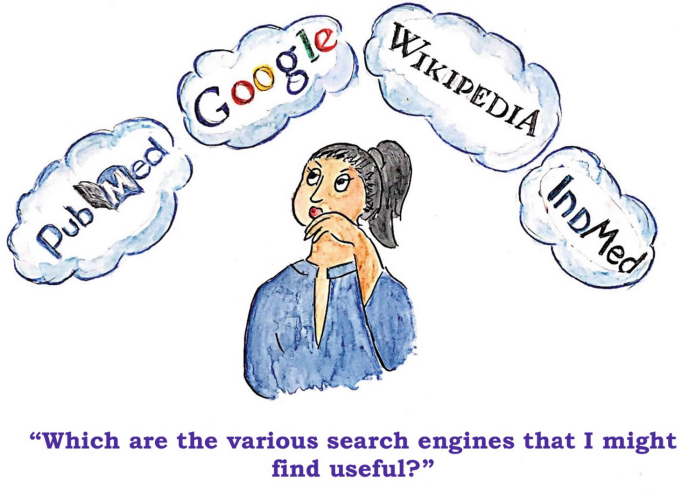
15 What Are some Data Portals Maintained by Publishers and Search Engines?
EMBASE (ExcerptaMedica) is a large multipurpose biomedical and pharmacological bibliographic database of the published literature.
ScienceDirect contains articles on science, technology, and medical research. It contains 12 million articles from 3500 academic journals and 34,000 eBooks.
Google Scholar is a search engine that should be used often by the scientific community as it is a collection of a large number of articles, theses, books, and abstracts. Google Scholar also covers non-English sources, technical reports, conference presentations, and institutional repositories. The database is also a citation index; this means that you can search the number of times the article has been cited by other authors. The other advantage of Google Scholar is that it is easy to use and also covers the ‘grey’ literature like conference proceedings.
Its drawbacks are that it sometimes misses important articles, its content changes constantly, and sometimes includes material that has not gone through a peer-review process.
16 What Is Scopus?
This is the world’s largest database and includes cited articles, journals, books, and conference proceedings They are all peer-reviewed. It is easy to use and includes more than 36,377 titles. It is maintained by Elsevier and includes citations from top licenses, social sciences, and related medical fields.
17 What Is Index Copernicus (ICI)?
ICI is a journal indexing base that has been in existence for almost 20 years. The indexation is based on a hundred criteria but the process of evaluation is free of charge. The index Copernicus is valuable for scientific journal publishers to increase their impact factor.
18 Can Online Portals for Clinical Trials Be Accessed?
The information can be obtained from the clinical trials registry—ctro.nic.in/clinicaltrials. The website is free and all the trials need to be registered in this portal. All postgraduate theses should be registered at this site [15].It provides publications in the form of a clinical trial register of the India bulletin and also about how to plan clinical trials in India, strengthening the ethics in clinical research, and updating the clinical trials registry in India.
19 What Is the Information and Library Network (INFLIBNET)?
The INFLIBNET is a centre in Gandhinagar and is an autonomous inter-university centre under the University Grants Commission. It contains a digital library of more than 15,000 core peer-reviewed journals and a number of bibliography citations and databases. The site promotes higher education e-resources and has many e-journals. The various e-resources include biochemistry, biological sciences, biotechnology, criminology, education, microbiology, which may be relevant to medical practice. Government-aided colleges can access this through their libraries.
20 Conclusions
-
Navigating through the jungle of information now available is a difficult task. It involves browsing through research papers, reading the information provided, and critically analyzing the facts which may be useful for your research.
-
PubMed and PubMed Central are the main indexing sites we recommend. Other important databases like Google Scholar, Embase, Science Direct, and Scopus should also be explored.
-
An effective way to use PubMed can be learned by using the YouTube video on this subject.
-
A comprehensive review of the literature will help you to write a good Introduction and Discussion.
References
Kashyap B, Singh NP. Performing a literatue seach in: handbook on research methodology. Prakash A, Pangtey, Munjal YP, Evangel, 2018.
Gentles SJ, Charles C, Nicholas DB, Ploeg J, McKibbon KA. Reviewing the research methods literature: principles and strategies illustrated by a systematic overview of sampling in qualitative research. Syst Rev. 2016;5:172.
How to Write a Research Paper: Identify Keywords A step-by-step guide. Last accessed on 9th May 2020. Available on https://libguides.lvc.edu/c.php?g=333843&p=2247147.
Stop words.Last accessed on 9th May 2020. Available on https://en.wikipedia.org/wiki/Stop_words.
Wikipedia:Ten_things_you_may_not_know_about_Wikipedia Wikipedia: Ten things you may not know about Wikipedia.Last accessed on 9th May 2020. Available on https://en.wikipedia.org/wiki/
Wang L, Wang J, Wang M, Li Y, Liang Y, Xu D. Using internet search engines to obtain medical information: a comparative study. J Med Internet Res. 2012;14:e74.
Tang H, NG JH. Use of Google as a diagnostic aid: authors’ reply to responses. BMJ. 2006;333:1270.
Williamson PO, Minter CIJ. Exploring PubMed as a reliable resource for scholarly communications services. J Med Libr Assoc. 2019;107:16–29.
Bekhuis T, Demner-Fushman D, Crowley RS. Comparative effectiveness research designs: an analysis of terms and coverage in medical subject headings (MeSH) and Emtree. J Med Libr Assoc. 2013;101:92–100.
Marmarelis VZ, Zanos TP, Berger TW. Boolean modeling of neural systems with point-process inputs and outputs. Part I: theory and simulations. Ann Biomed Eng. 2009;37:1654–67.
Is your journal in PubMed / PubMed Central? Last accessed on 9th May 2020. Available on https://support.jmir.org/hc/en-us/articles/115000406111-Is-your-journal-in-PubMed-PubMed-Central-.
Jørgensen L, Paludan-Müller AS, Laursen DR, et al. Evaluation of the Cochrane tool for assessing risk of bias in randomized clinical trials: overview of published comments and analysis of user practice in Cochrane and non-Cochrane reviews. Syst Rev. 2016;5:80.
Ressing M, Blettner M, Klug SJ. Systematic literature reviews and meta-analyses: part 6 of a series on evaluation of scientific publications. Dtsch Arztebl Int. 2009;106:456–63.
Subramanyam N, Krishnamurthy M, Asundi AY. IndMed : an evaluative study on the coverage of Indian medical literature. SRELS J Inf Manag. 2017;Sl:1–36.
Sil A, Das NK. How to register a clinical trial in India? Indian J Dermatol. 2013;58:235–6.
Author information
Authors and Affiliations
Rights and permissions
Open Access This chapter is licensed under the terms of the Creative Commons Attribution 4.0 International License (http://creativecommons.org/licenses/by/4.0/), which permits use, sharing, adaptation, distribution and reproduction in any medium or format, as long as you give appropriate credit to the original author(s) and the source, provide a link to the Creative Commons license and indicate if changes were made.
The images or other third party material in this chapter are included in the chapter's Creative Commons license, unless indicated otherwise in a credit line to the material. If material is not included in the chapter's Creative Commons license and your intended use is not permitted by statutory regulation or exceeds the permitted use, you will need to obtain permission directly from the copyright holder.
Copyright information
© 2022 The Author(s)
About this chapter
Cite this chapter
Nundy, S., Kakar, A., Bhutta, Z.A. (2022). How to Do a Review of the Literature?. In: How to Practice Academic Medicine and Publish from Developing Countries?. Springer, Singapore. https://doi.org/10.1007/978-981-16-5248-6_18
Download citation
DOI: https://doi.org/10.1007/978-981-16-5248-6_18
Published:
Publisher Name: Springer, Singapore
Print ISBN: 978-981-16-5247-9
Online ISBN: 978-981-16-5248-6
eBook Packages: MedicineMedicine (R0)





